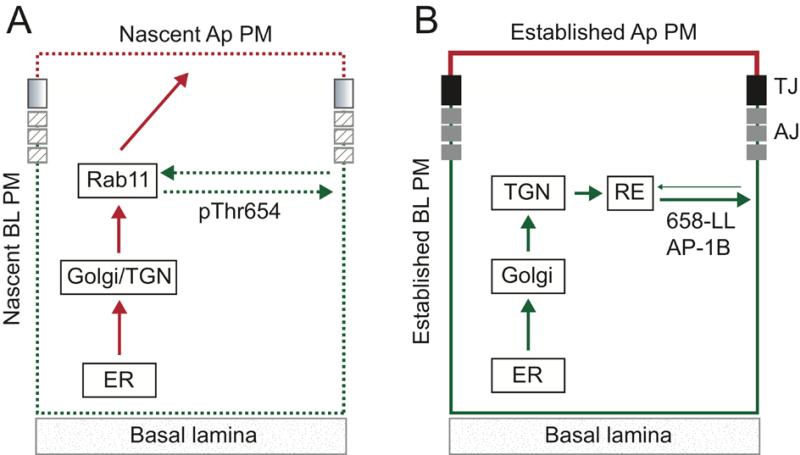Figure 10. Summary model.
Schematics depicting putative EGFR sorting pathways employed during cell-cell junction assembly (A) and in established epithelial cell layers (B). (A) PKC-dependent Thr654 phosphorylation activates a latent BL sorting signal during formation of new cell-cell junctional complexes (shaded and hatched boxes). The sorting route presumably involves Rab11+ recycling endosomes based on our previous results that EGFR (T654D) co-localizes with Rab11+ in MDCK cells (31). Data in this manuscript suggest the latent signal regulates recycling and retention on nascent BL membranes (dashed green). The latent signal may also divert EGFRs en route to the Ap membrane via a previously characterized N-glycan-dependent biosynthetic route (red) (29). (B) We have also shown previously that BL EGFR localization is regulated by interactions between a dileucine motif 658-LL and epithelial cell specific clathrin adaptor AP1B in cells with established cell-cell TJ and AJ (solid black and grey boxes) (31). Data presented in this manuscript indicate AP1B sorts EGFRs in a biosynthetic pathway most likely via post-TGN endosome sorting intermediates (solid green). We cannot exclude the possibility AP1B also regulates BL EGFR recycling under basal conditions. AJ: adherens junction; RE: recycling endosome; ER: endoplasmic reticulum; TGN: trans-Golgi network; TJ: tight junction.

